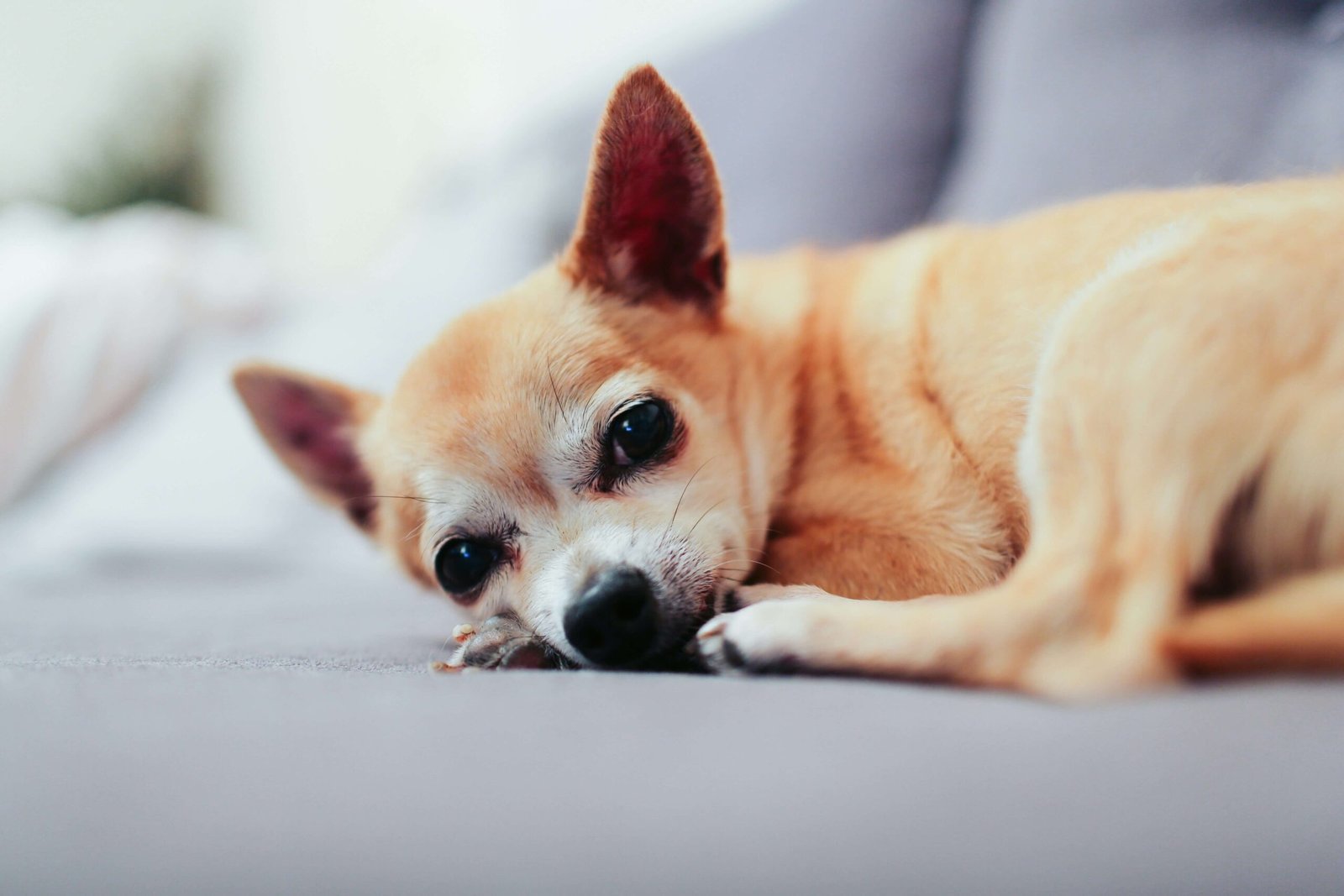How to Teach a Dog Place: A Step-by-Step Guide to Success
Teaching your dog the “place” command is a game-changer for both obedience and practicality. This versatile cue not only helps your furry friend stay calm and focused but also provides a designated spot where they can relax, whether at home, in public, or during busy moments. Whether you’re aiming to curb jumping on guests, manage excitement, or simply give your dog a safe space, mastering the “place” command is an invaluable skill. In this blog post, we’ll walk you through everything you need to know about teaching your dog “place,” from understanding the basics to troubleshooting common challenges. Let’s get started on this rewarding journey together!
What Does the “Place” Command Mean? Breaking It Down
Before diving into training, it’s important to understand what the “place” command entails. Simply put, “place” instructs your dog to go to a specific spot—usually a bed, mat, or designated area—and remain there until released. This command is especially useful for creating structure and reinforcing good behavior. Below are key points to help you grasp the concept:
Clear Expectations : The dog must go to the designated spot and stay there until given permission to leave.
Versatility : The “place” command can be used indoors, outdoors, or even in unfamiliar environments.
Behavioral Benefits : It helps reduce anxiety, prevent unwanted behaviors like jumping, and provide a sense of security.
Foundation for Other Commands : Teaching “place” builds patience and self-control, which are essential for advanced training.
Customizable Locations : You can assign multiple “places” depending on the situation, such as a bed at home or a mat in the car.
Understanding these basics sets the stage for effective training and ensures you and your dog are on the same page.
Step-by-Step Guide to Teaching “Place”
Teaching your dog the “place” command requires patience, consistency, and positive reinforcement. By breaking the process into manageable steps, you can ensure your dog learns effectively while enjoying the experience. Here’s how to get started:
Choose the Right Spot : Select a comfortable, clearly defined area like a dog bed or mat that will serve as the “place.”
Introduce the Spot Positively : Encourage your dog to explore the spot by placing treats or toys on it, associating it with positive experiences.
Use a Verbal Cue : Say “place” as you guide your dog toward the designated area, rewarding them when they step onto it.
Build Duration : Gradually increase the time your dog stays on the spot before rewarding them, starting with a few seconds and working up to minutes.
Add Distance : Practice moving away from the spot while your dog remains in place, reinforcing their ability to stay despite distractions.
By following these steps, you’ll lay a strong foundation for your dog’s understanding of the “place” command.
Check this guide 👉How to Teach Your Dog to Play Dead: Best 7 Expert Tips!
Check this guide 👉Teaching Your Dog to Spin: Best 7 Training Tips!
Check this guide 👉How to Teach a Dog to Heel: Best 7 Expert Tips!

Training Tips for “Place” | Key Benefits |
|---|---|
Start with short sessions | Builds focus without overwhelming the dog |
Use high-value treats | Motivates the dog to engage and succeed |
Practice in different locations | Helps generalize the command for versatility |
Stay consistent with cues | Reinforces clear communication and trust |
Celebrate small victories | Keeps training fun and encourages progress |
Common Mistakes to Avoid When Teaching “Place”
While teaching “place” is straightforward, there are pitfalls that can slow progress or create confusion for your dog. Being aware of these mistakes will help you train more effectively. Here’s what to watch out for:
Inconsistent Cues : Using different words or gestures for the same command can confuse your dog. Stick to one clear cue.
Skipping Foundation Steps : Rushing through the basics can lead to gaps in understanding. Take your time with each phase.
Overlooking Distractions : Failing to practice in distracting environments can limit your dog’s ability to perform reliably.
Using Punishment : Negative reinforcement can damage trust and make training stressful for your dog. Focus on rewards instead.
Expecting Perfection Too Soon : Progress takes time. Celebrate incremental improvements rather than demanding perfection immediately.
Avoiding these mistakes will set you and your dog up for long-term success with the “place” command.
Advanced Techniques to Strengthen the “Place” Command
Once your dog has mastered the basics of “place,” you can introduce advanced techniques to refine their skills and boost reliability. These methods challenge your dog while deepening their understanding of the command. Consider the following strategies:
Add Movement : Walk around or move away from the spot to test your dog’s ability to stay in place.
Introduce Distractions : Practice in environments with mild distractions, gradually increasing the challenge as your dog improves.
Extend Duration : Work on longer stays, rewarding your dog for maintaining focus over extended periods.
Change Locations : Train in various settings, such as parks or friends’ houses, to reinforce adaptability.
Combine with Other Commands : Pair “place” with commands like “sit” or “down” to build multi-step obedience.
These advanced techniques will elevate your dog’s mastery of the “place” command, ensuring they perform reliably in any situation.
Making “Place” Fun and Engaging for Your Dog
Training doesn’t have to feel like a chore—for you or your dog! By incorporating fun elements into the “place” command, you can keep your pup excited and motivated throughout the process. Here are some creative ideas to make training enjoyable:
Use Toys as Rewards : Instead of treats, reward your dog with their favorite toy when they successfully go to their place.
Incorporate Playtime : After a successful session, engage in a quick game of fetch or tug-of-war to celebrate their hard work.
Train in Short Bursts : Keep sessions brief (5–10 minutes) to maintain your dog’s focus and enthusiasm.
Add Verbal Praise : Pair rewards with enthusiastic praise like “Good job!” to reinforce positive emotions.
Experiment with Surprises : Occasionally surprise your dog with a special treat or new toy as an extra motivator.
By keeping training sessions lighthearted and engaging, you’ll create a positive association with the “place” command that encourages long-term success.
Troubleshooting Common Challenges During Training
Even with the best intentions, challenges can arise during the training process. Understanding how to address these issues will help you stay on track and prevent frustration. Here are some common hurdles and solutions:
Dog Leaves the Spot Too Early : Reinforce the “stay” portion by rewarding incremental progress, even if it’s just a few extra seconds.
Lack of Focus : Train in quieter environments initially, then gradually introduce distractions as your dog becomes more confident.
Refusal to Go to the Spot : Revisit earlier steps, ensuring the spot is associated with positivity and rewards.
Overexcitement Around Guests : Practice the “place” command during calm moments before expecting compliance during high-energy situations.
Inconsistent Performance : Ensure all family members use the same cues and rewards to avoid confusing your dog.
With patience and persistence, these challenges can be overcome, paving the way for a well-trained and happy dog.
Using “Place” to Address Behavioral Issues
The “place” command isn’t just a neat trick—it’s a powerful tool for addressing a variety of behavioral challenges. By teaching your dog to go to their designated spot, you can manage unwanted behaviors effectively. Here’s how “place” can help:
Jumping on Guests : Direct your dog to their spot when visitors arrive, preventing them from jumping or becoming overly excited.
Begging at the Table : Use “place” to keep your dog occupied and out of the dining area during meals.
Excessive Barking : Redirect barking behavior by sending your dog to their spot, where they can calm down.
Anxiety in Busy Situations : Provide a safe space for your dog to retreat to during chaotic moments, like parties or loud events.
Impulse Control : Strengthen your dog’s ability to wait calmly instead of rushing toward distractions.
By integrating “place” into your daily routine, you can transform it into a versatile solution for managing a wide range of behavioral issues.
Frequently Asked Questions About Teaching “Place”
How long does it take to teach a dog "place"?
The timeline varies depending on the dog, but most dogs can learn the basics within a few weeks of consistent training.
What if my dog doesn’t stay on the spot?
Start with shorter durations and gradually build up, rewarding consistently to reinforce the behavior.
Can I use a verbal release cue?
Yes! A release word like “okay” or “free” signals that your dog can leave the spot.
Is "place" suitable for all dogs?
Yes, dogs of all ages and breeds can learn “place” with patience and proper training.
What treats work best for training?
High-value treats like small pieces of chicken or cheese are ideal for keeping your dog motivated.
Mastering “Place”: A Rewarding Journey for You and Your Dog
Teaching your dog the “place” command is not just about obedience—it’s about creating harmony and structure in your daily life. With patience, consistency, and positive reinforcement, you can transform this simple cue into a powerful tool for managing behavior and building trust. Remember, every dog learns at their own pace, so celebrate small victories along the way. By investing time and effort into this training, you’re not only enhancing your dog’s skills but also strengthening the bond you share. So grab some treats, find a cozy spot, and embark on this fulfilling journey with your four-legged friend!
Cuterebra Larvae in Cats: Best 7 Expert Tips! – Expert advice on signs, treatment & prevention of this rare but serious feline parasitic infestation.
Cuterebra Larvae in Dogs: Best 7 Expert Tips! – Expert advice on signs, treatment & prevention of this rare but serious parasitic infestation.
Cat Tumor on Paw: Best 7 Expert Tips! – Expert advice on signs, diagnosis, treatment & care for feline paw tumors.
Panacur Side Effects in Dogs: Best 7 Expert Tips! – Safe usage, common reactions & when to call the vet.





